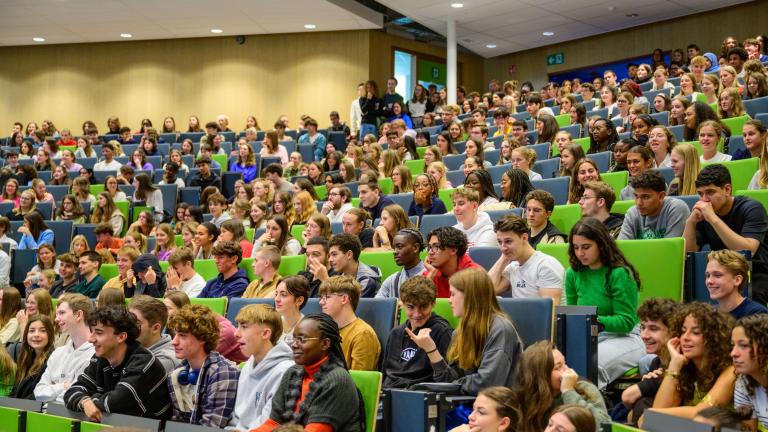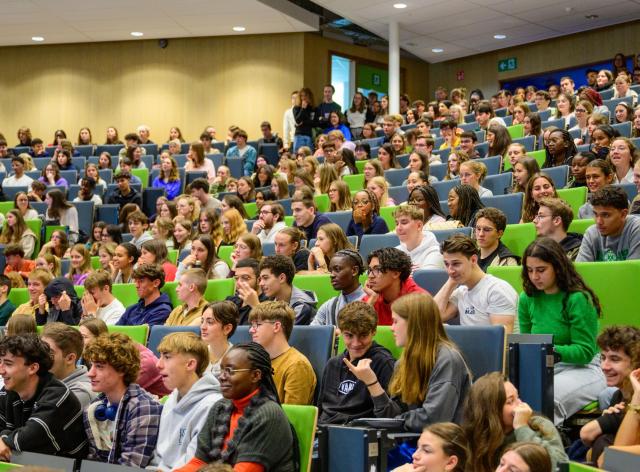Bienvenue sur le site officiel de l’École Doctorale Thématique en Sciences de l’Éducation – EDT Educ.
L'EDT Educ est une structure interuniversitaire soutenue par le F.R.S.-FNRS, qui rassemble les doctorant.es engagé.es dans des travaux en sciences de l’éducation en Fédération Wallonie-Bruxelles.
Elle vise à offrir un cadre stimulant, collaboratif et structurant pour les recherches doctorales, en favorisant les échanges scientifiques, la formation avancée et la visibilité des travaux menés.
L'EDT EDuc s’adresse principalement aux doctorant.es, en leur proposant des offres de formations transversales et des opportunités de réseautage, ainsi qu'aux promoteurs de thèse, en tant que partenaires essentiels du développement des compétences et de la rigueur scientifique des jeunes chercheurs.

L'EDT Educ en détails
Spotlight
News
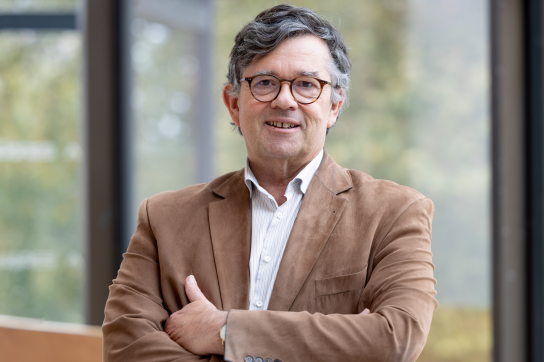
Marc Romainville: Learning to think right by discovering why we think wrong
Marc Romainville: Learning to think right by discovering why we think wrong
In a digital context where fake news and other "alternative truths" abound and spread frantically, how can we educate to doubt? That's the question answered by pedagogy expert Professor Marc Romainville. He shows how schools must appropriate this central mission to shape tomorrow's citizen.

What led you to work on education in doubt?
16% of young people believe that the earth is flat. Nearly 50% believe that the best method of getting information is to go online, compared with less than 10% who say they trust school more. These figures are alarming. And even more worrying: they're on the rise. Generally speaking, citizens are credulous about what they discover on the Internet. Learning to doubt is therefore a real challenge. The need is far from new, but today, with the development of digital technology and artificial intelligence, it is even more pressing. With examples like Trump, who doesn't care whether what he says to millions of people is true or false, we need to educate people in this discernment more than ever. Doesn't Trump's victory reflect the failure of the American school system? By teaching young people to think right from school, based on a better understanding of why they think wrong, they will become cautious, critical digital citizens who are aware of the traps laid by the sirens of disinformation.
Do you think schools are not fulfilling this mission?
In part, but not enough. Within French-speaking education in Belgium, there is very clearly an awareness of the urgency and necessity of educating for doubt. In fact, this is one of the major thrusts of the Pacte d'Excellence, which is implementing a series of educational reforms from kindergarten to the end of secondary school. However, education in critical thinking is not sufficiently integrated into curricula. It should be part of every subject, from science to French, mathematics and history. What's more, schools don't know how to implement this learning.
How do you go about it?
This is the subject of my book (1), in which I develop a method for teaching critical thinking for the digital age. At the heart of my proposal is a pedagogy of metacognition, extended to thought processes. The first step is to make students aware of their own "me-thinking" mechanisms, i.e. their spontaneous and sometimes fallacious reasoning. Students must also be made aware of the biases that lead them to be excessively credulous. In other words, when confronted with a piece of information, students need to ask themselves spontaneously, but reasonably: "Is it right? How can I tell if it's right or wrong? At present, the education system has too much of a tendency to do this for the student, to tell him or her what is true and what is not. Yet there are a multitude of fairly simple techniques and activities to be carried out at school that train doubt, when necessary.
(1) "À l'école du doute", Marc Romainville, Presse universitaire de France, 2023
So what's to stop it becoming part of the school curriculum?
Because it takes time, and so we'd have to give up certain program elements in favor of educating people to doubt. But education is an ocean liner. To change direction just a little, you have to put a lot of energy into it. You have to convince a lot of players: politicians, teachers, inspectors, parents, etc. All of this leads to a certain inertia. All this leads to a certain amount of inertia. You can see it in every educational reform: there's a certain slowness in implementing change.
And yet you've worked to implement major educational reforms: so change is possible?
Of course. In recent years, the school, through the Pacte d'excellence reform, has changed its habits. It has adapted even better to the needs of our society. Real progress has been made in digital education, culture and the arts. Or in the introduction of the first reference framework for kindergartens. These are successes that we'll be able to accurately assess with the CEB exams in 2026.
After doubt, what's your next educational project?
Climate change education. This is also a central issue. At UNamur, we are already conducting research on this subject to determine the role of schools in this area. Here too, the need is great and urgent.
CV Express
Marc Romainville is Professor of Education at UNamur. In addition to metacognition and education for critical thinking, his main areas of research concern failure in higher education, student practices and changes in teaching practices at university. In connection with his research, Marc Romainville has also been involved in setting up innovative projects at the frontier between secondary and higher education, such as :
- The REBOND inter-network training course for early school leavers in Namur's higher education system.
- The ‘Passeports pour le bac’ project, aimed at identifying the prerequisites for university courses and measuring students' mastery of them at the start of the year.
- The ‘Transition Tutoring’ project, which uses the Passports to provide specific support for secondary school pupils from disadvantaged backgrounds (funded by the King Baudouin Foundation).
Marc Romainville is also one of the main architects of the Pacte pour un enseignement d'excellence. He was Chairman of the Commission des référentiels et des programmes, appointed by the Fédération Wallonie Bruxelles.
This article is taken from the "The Expert" section of Omalius magazine #35 (December 2024).
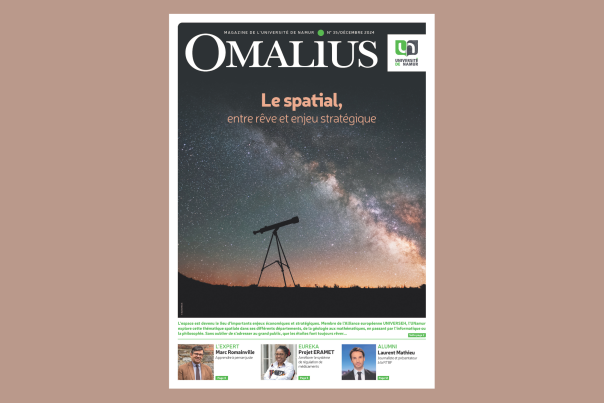

Model your ideas with the Lego Serious Play method
Model your ideas with the Lego Serious Play method
Pedagogy is constantly evolving to adapt to the changing needs of learners. Among innovative methods, Lego Serious Play stands out for its playful, collaborative approach. Used by "facilitators" all over the world, this method offers a unique framework for expressing and modeling ideas. François-Xavier Fievez and Julie Solbreux, professors at the University of Namur, regularly use this method in their courses.

The Lego Serious Play method enables participants to tell stories through Lego models. Facilitators ask open-ended, complex questions with no single answer, encouraging each participant to express his or her point of view in a tangible way, through a story. Once the ideas are on the table, the other participants can interact with the models and explain their point of view. Julie Solbreux, pedagogical coordinator at the EMCP Faculty (Economics, Management, Communication and Political Science), emphasizes that this methodology enables participants to take a step back and reflect collectively on shared ideas, and encourages the construction and modeling of thought, by offering a space to speak free of judgment. "It's a point of view that existed at a given time, but it's not the absolute truth or the person from whom the idea emanates that is stigmatized.", she points out.
François-Xavier Fievez adds that this method is part of a wider variety of methods known as "floating objects", tools that facilitate the embodiment of ideas in concrete objects. "Rather than confronting people through simple language, however abstract, we'll go through an object that lends itself to construction, deconstruction and modification. With the Lego method, the idea is to go much further in search of each person's conceptions and buried ideas: it's a question of bringing the mind down into the hands and building one's thoughts at the same time as building something.", he explains. In this way, the Lego models enable thoughts to be clarified for oneself and for others, while remaining available on the table for later modification. This enables continuous, collective reflection. "In short, we're learning on several levels: we're learning to work together, to discover each other, and at the same time, we're working on a problem.", adds Julie Solbreux.
Fostering collective intelligence
Although students are often skeptical of the Lego method at the start of class sessions, Julie Solbreux and François-Xavier Fievez insist that they come to appreciate the richness of the exercise. This method reveals the creativity of the participants and reinforces group cohesion.
"During my thesis, I observed that generally, a group of friends will get together to work together and only then agree on the subject to be analyzed. Right from the start, the group has very divergent ideas and ends up voting on which topic to tackle. But, inevitably, only a few people in the group are interested. This means that, at the slightest obstacle, those who didn't choose the topic are absolved of all responsibility for the problem, and the person who came up with the idea quickly becomes the leader. To counter this problem, I decided to apply the Lego Serious Play method during my seminars. This means I first ask the students what interests them, then group them by theme and get them to work together. By constructing the problem in this way, I have teams that function better over time: they are more cohesive and actively defend the ideas developed at the start of the seminar.", illustrates Julie Solbreux.
François-Xavier Fievez, too, believes that the Lego Serious Play method bears fruit during his sessions. "In the method, there are different processes including the warm-up. The very first instruction is to build a tower. What I like about this stage is taking time to show students that it never happens that two people build the same thing. For example, person A will have a building criterion based on height, while for another person, it will be based on solidity, or beauty, etc. This helps explain that we've got a lot to learn. This helps to explain that we all have a totally different grid of reality, and that otherness is always present. As a result, when we tackle extremely complex subjects, the reasons why we disagree don't mean that it's because our ideas are good or bad, but because we don't enter through the same doors. And so, we have to do some work to understand which door a person enters through, and bring some thought to it. Each time, everyone is astonished by this observation. As if, in disagreement, we can't finally clash".
Working as facilitators allows Francois- Xavier Fievez and Julie Solbreux to continually discuss and explore the possibilities offered by the Lego method. They find that this approach fosters collective intelligence, exemplified by idea modeling and team dynamics. Combining individual models into a coherent whole highlights the power of collaboration. What's more, the Lego method allows students to demonstrate creativity, something they feel they don't have in academia. "Bringing these toys also allows them to disconnect with what we usually do and reconnect with what they think, who they are etc. It's ultimately a small detour to have something much richer", adds Julie Solbreux.
The Lego Serious Play method offers a playful and engaging way of reconnecting learners with their ideas and with others. It challenges traditional notions of success and failure by offering a collaborative learning space that respects different perspectives. François-Xavier Fievez and Julie Solbreux demonstrate the potential of this method to enrich the educational experience and foster deep, collective reflection.
François-Xavier Fievez, member of the School of Modern Languages and Vice-Rector for Social and Student Affairs, is passionate about pedagogy. He has worked extensively with the PUNCH project (Pédagogie namuroise en changement) and the Faculty of Education and Training, exploring reflective practices, which led him to adopt the Lego Serious Play method.
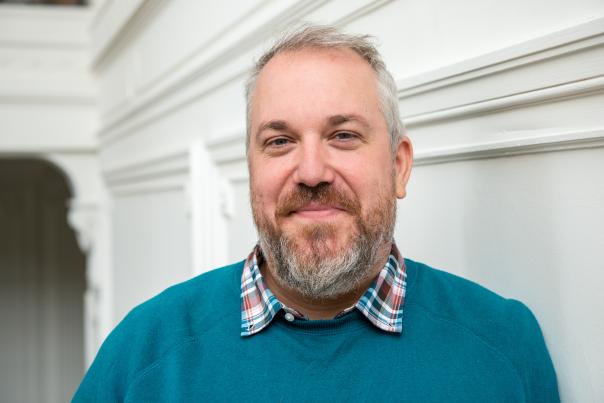
Julie Solbreux, educational coordinator for the EMCP faculty (Economics, Management, Communication and Political Science), has completed a thesis in social entrepreneurship education. She discovered this method after exploring various pedagogical approaches.
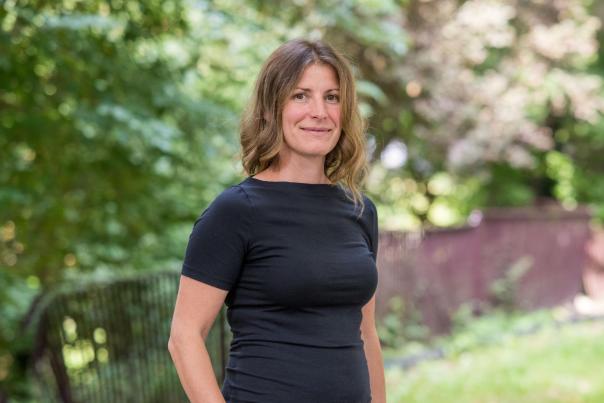
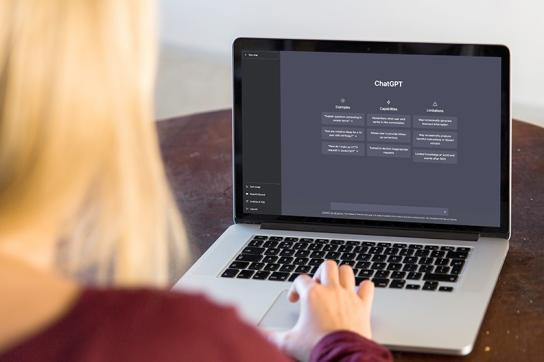
Use of ChatGPT by students: artificial intelligence is all the rage!
Use of ChatGPT by students: artificial intelligence is all the rage!
Following the 'buzz' generated by the development of ChatGPT at the end of 2022 and the questions it raised in higher education, UNamur's University Pedagogy Service (SPU) conducted a wide-ranging survey of Block 1 students in the 6 faculties. The results are surprising.

Les étudiants étaient invités, au travers de cette enquête anonyme, à dire s’ils utilisaient régulièrement des outils d’intelligence artificielle et si oui lesquels (quelques exemples étaient proposés notamment ChatGPT, mais aussi Google Translate ou encore DeepL…), dans quelles situations en faisaient-ils usage, et les avantages qu’ils ont constatés de cette utilisation.
Ce qui ressort des résultats obtenus ? Seuls 13% des étudiants interrogés avaient déjà utilisé ChatGPT dans le cadre de leurs cours. Ce sont majoritairement pour les cours de mathématiques, programmation et langues que les étudiants y ont recours. Les utilisateurs ont identifié 3 avantages principaux à l’utilisation de ChatGPT : l’explication donnée par l’outil, sa rapidité et sa simplicité.
Mais ce qui ressort aussi de cette enquête, à laquelle 1233 étudiants de bloc 1 ont répondu, c’est qu’une large majorité des répondants ont déjà été amenés à utiliser des outils d’intelligence artificielle dans le cadre de leurs cours : 67% d’entre eux font usage, par exemple, de Google translate et 39% de DeepL (un autre outil de traduction). Dans quel but utilisent-ils ces outils d’intelligence artificielle ? Pour les aider à définir un mot, pour mieux comprendre un cours, pour illustrer un concept ou encore pour résoudre un exercice.
Quelles leçons peut-on dès lors tirer de cette enquête ?
Selon le SPU, il y a 4 enseignements principaux :
- Les étudiants doivent être formés à ce qu’est réellement l’intelligence artificielle (notamment être conscient qu’elle n’est pas neutre, sous des dehors « gentillets » ou « bienveillants »);
- Ils doivent également développer leur questionnement et leur esprit critique ;
- Il serait aussi intéressant, plus généralement, de mener une réflexion sur le plagiat et plus particulièrement sur le IA-plagiat ;
- Les enseignants doivent être conscients que les étudiants ont recours à l’intelligence artificielle. L’inclure dans les cours peut être une manière de sensibiliser les étudiants aux atouts et aux dérives des IA.
L'équipe de recherche
Cette enquête a été réalisée du 1er février au 8 mars 2023 auprès de tous les étudiants de bloc 1 de l’UNamur.
L’équipe chercheurs à l’origine de cette étude :
- Marie LOBET, assistante au Service de Pédagogie Universitaire
- Antoine HONET, doctorant en physique au Laboratoire de physique du solide
- Valérie WATHELET, coordinatrice pédagogique au Service de Pédagogie Universitaire
Le résumé en trois chiffres
13%
d'étudianst disent avoir utilisé ChatGPT dans leurs cours
1233
étudiants de Bloc 1 ont participé à cette enquête
67%
des étudiants interrogés utilisent d'autres outils d'intelligence artificielle dans le cadre de leurs cours
Le service de pédagogie universitaire de l'UNamur

Marc Romainville: Learning to think right by discovering why we think wrong
Marc Romainville: Learning to think right by discovering why we think wrong
In a digital context where fake news and other "alternative truths" abound and spread frantically, how can we educate to doubt? That's the question answered by pedagogy expert Professor Marc Romainville. He shows how schools must appropriate this central mission to shape tomorrow's citizen.

What led you to work on education in doubt?
16% of young people believe that the earth is flat. Nearly 50% believe that the best method of getting information is to go online, compared with less than 10% who say they trust school more. These figures are alarming. And even more worrying: they're on the rise. Generally speaking, citizens are credulous about what they discover on the Internet. Learning to doubt is therefore a real challenge. The need is far from new, but today, with the development of digital technology and artificial intelligence, it is even more pressing. With examples like Trump, who doesn't care whether what he says to millions of people is true or false, we need to educate people in this discernment more than ever. Doesn't Trump's victory reflect the failure of the American school system? By teaching young people to think right from school, based on a better understanding of why they think wrong, they will become cautious, critical digital citizens who are aware of the traps laid by the sirens of disinformation.
Do you think schools are not fulfilling this mission?
In part, but not enough. Within French-speaking education in Belgium, there is very clearly an awareness of the urgency and necessity of educating for doubt. In fact, this is one of the major thrusts of the Pacte d'Excellence, which is implementing a series of educational reforms from kindergarten to the end of secondary school. However, education in critical thinking is not sufficiently integrated into curricula. It should be part of every subject, from science to French, mathematics and history. What's more, schools don't know how to implement this learning.
How do you go about it?
This is the subject of my book (1), in which I develop a method for teaching critical thinking for the digital age. At the heart of my proposal is a pedagogy of metacognition, extended to thought processes. The first step is to make students aware of their own "me-thinking" mechanisms, i.e. their spontaneous and sometimes fallacious reasoning. Students must also be made aware of the biases that lead them to be excessively credulous. In other words, when confronted with a piece of information, students need to ask themselves spontaneously, but reasonably: "Is it right? How can I tell if it's right or wrong? At present, the education system has too much of a tendency to do this for the student, to tell him or her what is true and what is not. Yet there are a multitude of fairly simple techniques and activities to be carried out at school that train doubt, when necessary.
(1) "À l'école du doute", Marc Romainville, Presse universitaire de France, 2023
So what's to stop it becoming part of the school curriculum?
Because it takes time, and so we'd have to give up certain program elements in favor of educating people to doubt. But education is an ocean liner. To change direction just a little, you have to put a lot of energy into it. You have to convince a lot of players: politicians, teachers, inspectors, parents, etc. All of this leads to a certain inertia. All this leads to a certain amount of inertia. You can see it in every educational reform: there's a certain slowness in implementing change.
And yet you've worked to implement major educational reforms: so change is possible?
Of course. In recent years, the school, through the Pacte d'excellence reform, has changed its habits. It has adapted even better to the needs of our society. Real progress has been made in digital education, culture and the arts. Or in the introduction of the first reference framework for kindergartens. These are successes that we'll be able to accurately assess with the CEB exams in 2026.
After doubt, what's your next educational project?
Climate change education. This is also a central issue. At UNamur, we are already conducting research on this subject to determine the role of schools in this area. Here too, the need is great and urgent.
CV Express
Marc Romainville is Professor of Education at UNamur. In addition to metacognition and education for critical thinking, his main areas of research concern failure in higher education, student practices and changes in teaching practices at university. In connection with his research, Marc Romainville has also been involved in setting up innovative projects at the frontier between secondary and higher education, such as :
- The REBOND inter-network training course for early school leavers in Namur's higher education system.
- The ‘Passeports pour le bac’ project, aimed at identifying the prerequisites for university courses and measuring students' mastery of them at the start of the year.
- The ‘Transition Tutoring’ project, which uses the Passports to provide specific support for secondary school pupils from disadvantaged backgrounds (funded by the King Baudouin Foundation).
Marc Romainville is also one of the main architects of the Pacte pour un enseignement d'excellence. He was Chairman of the Commission des référentiels et des programmes, appointed by the Fédération Wallonie Bruxelles.
This article is taken from the "The Expert" section of Omalius magazine #35 (December 2024).


Model your ideas with the Lego Serious Play method
Model your ideas with the Lego Serious Play method
Pedagogy is constantly evolving to adapt to the changing needs of learners. Among innovative methods, Lego Serious Play stands out for its playful, collaborative approach. Used by "facilitators" all over the world, this method offers a unique framework for expressing and modeling ideas. François-Xavier Fievez and Julie Solbreux, professors at the University of Namur, regularly use this method in their courses.

The Lego Serious Play method enables participants to tell stories through Lego models. Facilitators ask open-ended, complex questions with no single answer, encouraging each participant to express his or her point of view in a tangible way, through a story. Once the ideas are on the table, the other participants can interact with the models and explain their point of view. Julie Solbreux, pedagogical coordinator at the EMCP Faculty (Economics, Management, Communication and Political Science), emphasizes that this methodology enables participants to take a step back and reflect collectively on shared ideas, and encourages the construction and modeling of thought, by offering a space to speak free of judgment. "It's a point of view that existed at a given time, but it's not the absolute truth or the person from whom the idea emanates that is stigmatized.", she points out.
François-Xavier Fievez adds that this method is part of a wider variety of methods known as "floating objects", tools that facilitate the embodiment of ideas in concrete objects. "Rather than confronting people through simple language, however abstract, we'll go through an object that lends itself to construction, deconstruction and modification. With the Lego method, the idea is to go much further in search of each person's conceptions and buried ideas: it's a question of bringing the mind down into the hands and building one's thoughts at the same time as building something.", he explains. In this way, the Lego models enable thoughts to be clarified for oneself and for others, while remaining available on the table for later modification. This enables continuous, collective reflection. "In short, we're learning on several levels: we're learning to work together, to discover each other, and at the same time, we're working on a problem.", adds Julie Solbreux.
Fostering collective intelligence
Although students are often skeptical of the Lego method at the start of class sessions, Julie Solbreux and François-Xavier Fievez insist that they come to appreciate the richness of the exercise. This method reveals the creativity of the participants and reinforces group cohesion.
"During my thesis, I observed that generally, a group of friends will get together to work together and only then agree on the subject to be analyzed. Right from the start, the group has very divergent ideas and ends up voting on which topic to tackle. But, inevitably, only a few people in the group are interested. This means that, at the slightest obstacle, those who didn't choose the topic are absolved of all responsibility for the problem, and the person who came up with the idea quickly becomes the leader. To counter this problem, I decided to apply the Lego Serious Play method during my seminars. This means I first ask the students what interests them, then group them by theme and get them to work together. By constructing the problem in this way, I have teams that function better over time: they are more cohesive and actively defend the ideas developed at the start of the seminar.", illustrates Julie Solbreux.
François-Xavier Fievez, too, believes that the Lego Serious Play method bears fruit during his sessions. "In the method, there are different processes including the warm-up. The very first instruction is to build a tower. What I like about this stage is taking time to show students that it never happens that two people build the same thing. For example, person A will have a building criterion based on height, while for another person, it will be based on solidity, or beauty, etc. This helps explain that we've got a lot to learn. This helps to explain that we all have a totally different grid of reality, and that otherness is always present. As a result, when we tackle extremely complex subjects, the reasons why we disagree don't mean that it's because our ideas are good or bad, but because we don't enter through the same doors. And so, we have to do some work to understand which door a person enters through, and bring some thought to it. Each time, everyone is astonished by this observation. As if, in disagreement, we can't finally clash".
Working as facilitators allows Francois- Xavier Fievez and Julie Solbreux to continually discuss and explore the possibilities offered by the Lego method. They find that this approach fosters collective intelligence, exemplified by idea modeling and team dynamics. Combining individual models into a coherent whole highlights the power of collaboration. What's more, the Lego method allows students to demonstrate creativity, something they feel they don't have in academia. "Bringing these toys also allows them to disconnect with what we usually do and reconnect with what they think, who they are etc. It's ultimately a small detour to have something much richer", adds Julie Solbreux.
The Lego Serious Play method offers a playful and engaging way of reconnecting learners with their ideas and with others. It challenges traditional notions of success and failure by offering a collaborative learning space that respects different perspectives. François-Xavier Fievez and Julie Solbreux demonstrate the potential of this method to enrich the educational experience and foster deep, collective reflection.
François-Xavier Fievez, member of the School of Modern Languages and Vice-Rector for Social and Student Affairs, is passionate about pedagogy. He has worked extensively with the PUNCH project (Pédagogie namuroise en changement) and the Faculty of Education and Training, exploring reflective practices, which led him to adopt the Lego Serious Play method.

Julie Solbreux, educational coordinator for the EMCP faculty (Economics, Management, Communication and Political Science), has completed a thesis in social entrepreneurship education. She discovered this method after exploring various pedagogical approaches.


Use of ChatGPT by students: artificial intelligence is all the rage!
Use of ChatGPT by students: artificial intelligence is all the rage!
Following the 'buzz' generated by the development of ChatGPT at the end of 2022 and the questions it raised in higher education, UNamur's University Pedagogy Service (SPU) conducted a wide-ranging survey of Block 1 students in the 6 faculties. The results are surprising.

Les étudiants étaient invités, au travers de cette enquête anonyme, à dire s’ils utilisaient régulièrement des outils d’intelligence artificielle et si oui lesquels (quelques exemples étaient proposés notamment ChatGPT, mais aussi Google Translate ou encore DeepL…), dans quelles situations en faisaient-ils usage, et les avantages qu’ils ont constatés de cette utilisation.
Ce qui ressort des résultats obtenus ? Seuls 13% des étudiants interrogés avaient déjà utilisé ChatGPT dans le cadre de leurs cours. Ce sont majoritairement pour les cours de mathématiques, programmation et langues que les étudiants y ont recours. Les utilisateurs ont identifié 3 avantages principaux à l’utilisation de ChatGPT : l’explication donnée par l’outil, sa rapidité et sa simplicité.
Mais ce qui ressort aussi de cette enquête, à laquelle 1233 étudiants de bloc 1 ont répondu, c’est qu’une large majorité des répondants ont déjà été amenés à utiliser des outils d’intelligence artificielle dans le cadre de leurs cours : 67% d’entre eux font usage, par exemple, de Google translate et 39% de DeepL (un autre outil de traduction). Dans quel but utilisent-ils ces outils d’intelligence artificielle ? Pour les aider à définir un mot, pour mieux comprendre un cours, pour illustrer un concept ou encore pour résoudre un exercice.
Quelles leçons peut-on dès lors tirer de cette enquête ?
Selon le SPU, il y a 4 enseignements principaux :
- Les étudiants doivent être formés à ce qu’est réellement l’intelligence artificielle (notamment être conscient qu’elle n’est pas neutre, sous des dehors « gentillets » ou « bienveillants »);
- Ils doivent également développer leur questionnement et leur esprit critique ;
- Il serait aussi intéressant, plus généralement, de mener une réflexion sur le plagiat et plus particulièrement sur le IA-plagiat ;
- Les enseignants doivent être conscients que les étudiants ont recours à l’intelligence artificielle. L’inclure dans les cours peut être une manière de sensibiliser les étudiants aux atouts et aux dérives des IA.
L'équipe de recherche
Cette enquête a été réalisée du 1er février au 8 mars 2023 auprès de tous les étudiants de bloc 1 de l’UNamur.
L’équipe chercheurs à l’origine de cette étude :
- Marie LOBET, assistante au Service de Pédagogie Universitaire
- Antoine HONET, doctorant en physique au Laboratoire de physique du solide
- Valérie WATHELET, coordinatrice pédagogique au Service de Pédagogie Universitaire
Le résumé en trois chiffres
13%
d'étudianst disent avoir utilisé ChatGPT dans leurs cours
1233
étudiants de Bloc 1 ont participé à cette enquête
67%
des étudiants interrogés utilisent d'autres outils d'intelligence artificielle dans le cadre de leurs cours
Le service de pédagogie universitaire de l'UNamur
